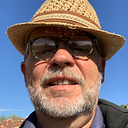Member-only story
In Search of the Ultimate: Theism and God
This is the fourth post in a series aimed at analyzing some major ideas of the Ultimate drawing on Jeanine Diller’s entry in the Stanford Encyclopedia of Philosophy. Diller treats Brahman, God and the Dao in her study based on when these concepts first emerged. We considered Brahman and the Dao in this series and now turn to the theistic God as understood in the Western tradition.
Our ideas of God derive from multiple sources. The Bible, of course, is a primary one, but the biblical writers themselves drew on multiple sources (even if guided by the Spirit as traditional believers aver). Philosophers, theologians, scientists, preachers and teachers through the ages have all contributed to the conglomeration of ideas generally considered to be based on the Bible. Even those who hold to a transcription version of biblical inspiration do not have a universally agreed on idea who God is.
One of Diller’s most helpful contributions is presenting a categorization of ideas of God she calls models. The variety of models within each of the three traditions of the Ultimate evaluated by her show great diversity. The same is true of ideas of God. As I mentioned in an earlier post, one of the most surprising realizations to me in reading Diller’s review of the Ultimates, is the variation in each view and how some link much closer to a more unified picture. In…
